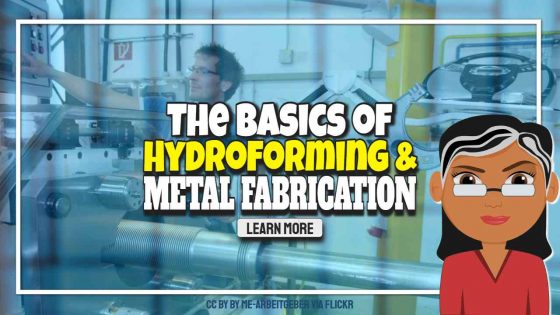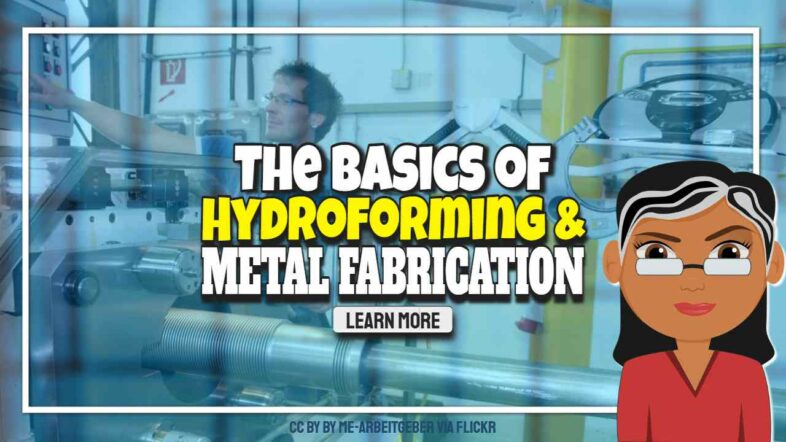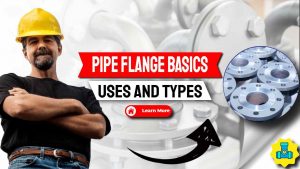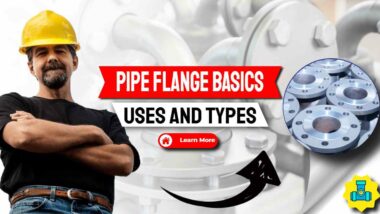The Basics of Hydroforming and Metal Fabrication: In every working environment and household, metal determines the way we operate. From light fittings to appliances to utensils, desk tools, and chairs, metal is a stabilizer that makes our day-to-day conveniences possible.
What is Hydroforming?
This is a process of manufacturing different shapes of malleable metals like aluminum. The end products are pieces that are structurally strong and won’t lose all the attributes of their parent material. It is also known as a metal forming and fabricating process.
This technique uses a hydraulic fluid in high pressure to force the metal (in its solid form) into a mold. It is mostly used in vehicle production to create the unibody structure present in many cars today. The technique is gradually replacing the old method of stamping two halves and welding them into one piece. You can watch this video to learn more about hydroforming.

CC BY by ME-Arbeitgeber Via Flickr
A Brief Description of the Hydroforming Process
The machines for hydroforming use a mold that is the reverse of the product to be made.
Light metal sheets are placed and secured in the mold, then the hydraulic pistons will inject the high-pressured hydraulic.
The fluid pressure will force the sheets against the reverse mold, shaping them into the intended design. Lastly, the liquid comes out while the shaped metals are removed as the intended design and not as the reverse.
Types of Hydroforming
Selecting a method of hydroforming depends on the requirements of your project.
There may be limits to what a process can generate, but there are various components that you can manufacture. The commonest types of metal hydroforming are:
Tube – it applies low pressure so that the overall integrity, strength, and performance of the metal will be enhanced.
Panel – it is used in the automobile and aerospace industry. It is done under extremely high pressure to get a good flow of material.
High pressure – it is used to reshape panels or tubes into a completely different shape. It can dramatically alter the circumference and length of an item.
Low pressure – it is used to make slight changes in the shapes of materials instead of significant alterations.
Advantages of Hydroforming
Metal hydroforming appeals to many machine shops because of the huge benefits its offers, which include:
- Solid component designs instead of segments that are joined in multiple places.
- Structural integrity.
- Freedom to package a vast array of structural builds.
- Structural efficiency.
- Cost efficiency.
Hydroforming may be cost-efficient, but you must know that the machines could be expensive. However, as soon as you acquire the machines, you will be able to cover the cost within a few years.
What is Metal Fabrication?
Metal fabrication involves converting metals in their raw form into different shapes for assembling.
For instance, an automobile’s frame comprises various panels, which are produced from custom fabrication processes. The fabrication is done in a fabrication site and sent to the auto assembly site.
The process of metal fabrication is complex and varies, depending on what you want to fabricate. The process involves the following:
- Cutting
- Folding
- Welding
- Machining
- Punching
- Shearing
- Stamping
- Casting
Additional processes may include milling, grinding, honing, and broaching. Some facilities perform customized fabrications, depending on what they want to achieve.
Therefore, if you are looking for a hydroforming company and manufacturer, ensure they can customize the production process to suit your needs.
Materials That Undergo Metal Fabrication
Various everyday items were produced using metal fabrication. They include the following:
Blinds
We use blinds in our homes and offices to block excess sunlight from filtering into our interior. We also use them to keep our space private.
These blinds are produced from leaf metals. They undergo folding and shearing to generate consistency and the shape they need to seal windows from outside exposure and sunlight.
Cans
Canned foods and other goods come in metal cans. These containers consist of aluminum leaf metal or tinplate, formed into circles.
The seams and the adjoining bottoms are welded to keep them shut. As soon as food products are inserted into the cans, the lids are welded into position.
Handles
Door handles and knobs utilize metals like brass and nickel silver.
They are cast, folded, and made into the intended shape. Whether the handles are curved or straight, or the knobs are ball-shaped or flat, the fabrication process is complex but similar.
Heaters
Heating units have enclosures that are made of metal sheets. This is the same as the inner components that enable heaters to function.
Latches
For fences, homes, and buildings, latches are made in different designs, yet they are all products of fabrication.
The common process of manufacturing them includes the use of diecasts and shearing. However, some designs involve folding, machining, and stamping.
Locks
Among all non-electronic fittings in any kind of building or house, the mechanisms for door locks are the most complicated.
Their inner workings are created for particular key shapes, which the locks must be molded to house.
Keys
After creating the locks, the next set of items are the keys. Most keys are produced from stamped and punched brass. However, the stronger and more durable keys are made from nickel silver.
Silverware
Utensils like knives, spoons, and forks are made from nickel silver or sterling. They are stamped or cast into shape.
This process is used for other utensils and items like openers, whips, and graters.
Fans
Many fans today are made of fiberglass and plastic parts. However, most models still have enclosures of folded and cut metal.
Hydroforming and Metal Fabrication Conclusion
Hydroforming is a type of fabrication. However, it helps manufacturers save time because they won’t cut and weld different parts to create a whole product.
The technique makes things easy especially when you want to venture into mass production.
Even when you want to customize goods for your clients, hydroforming is still a good option.
In this article, we discussed the processes involved in hydroforming as well as metal fabrication.
We also looked at the types and advantages of hydroforming, including the materials that can be fabricated.
Although the machine for hydroforming is expensive, the benefits will pay off the debt in the long run.
Pipe Flange Basics, Uses and Types
Pipe Flange Basics, Uses and Types: Piping applications require a lot of joining and connections as oftentimes, you cannot have a straight pipe from end to end. At some point, pipes have to be connected to something; a piece of equipment, a valve, or any other component. To make these connections, you require a joining method. […]






